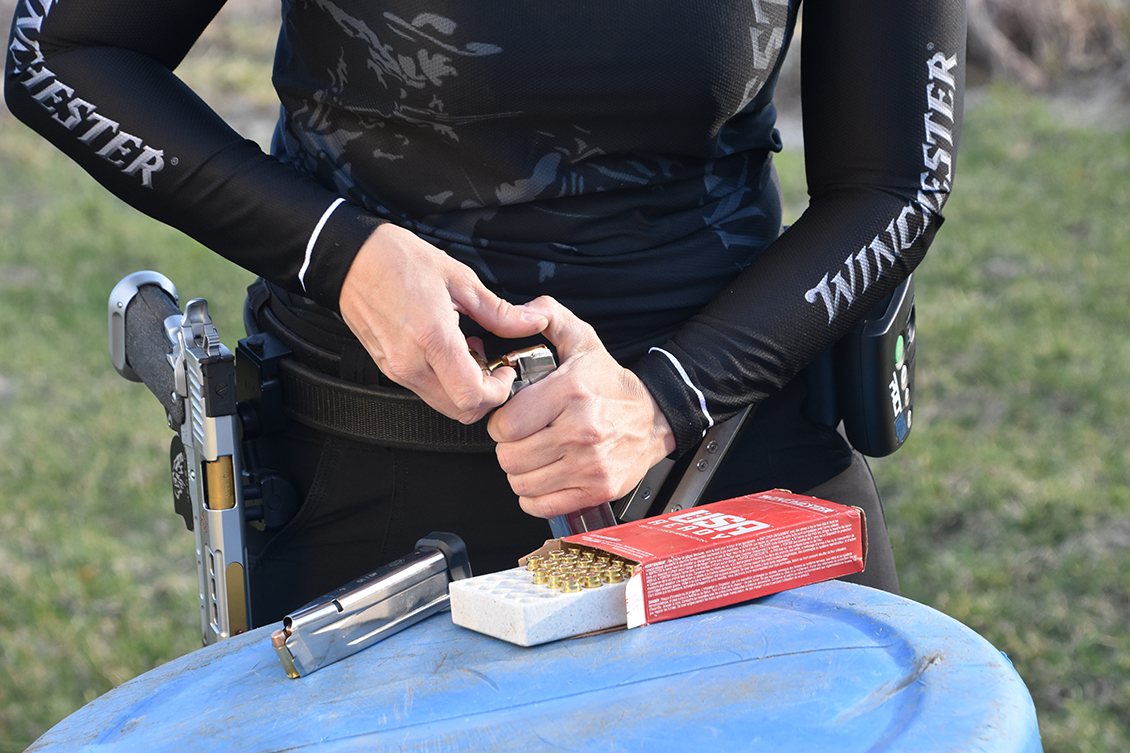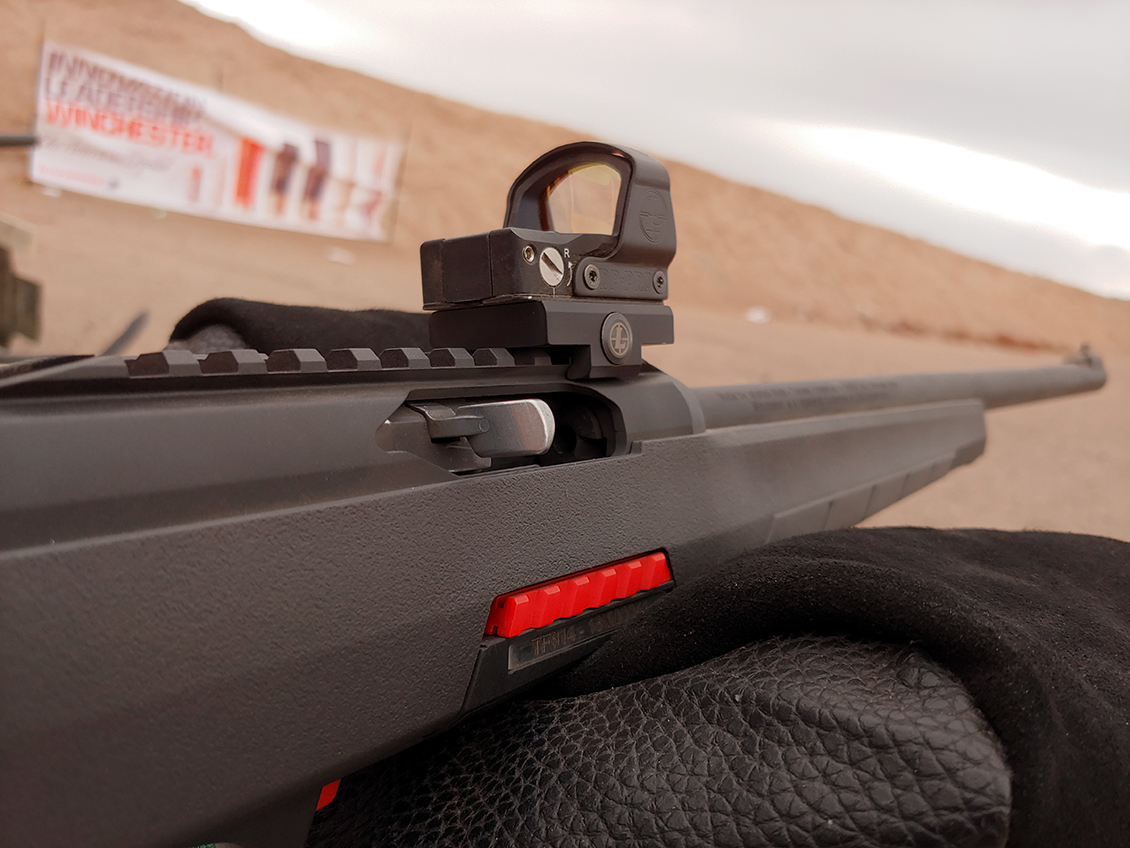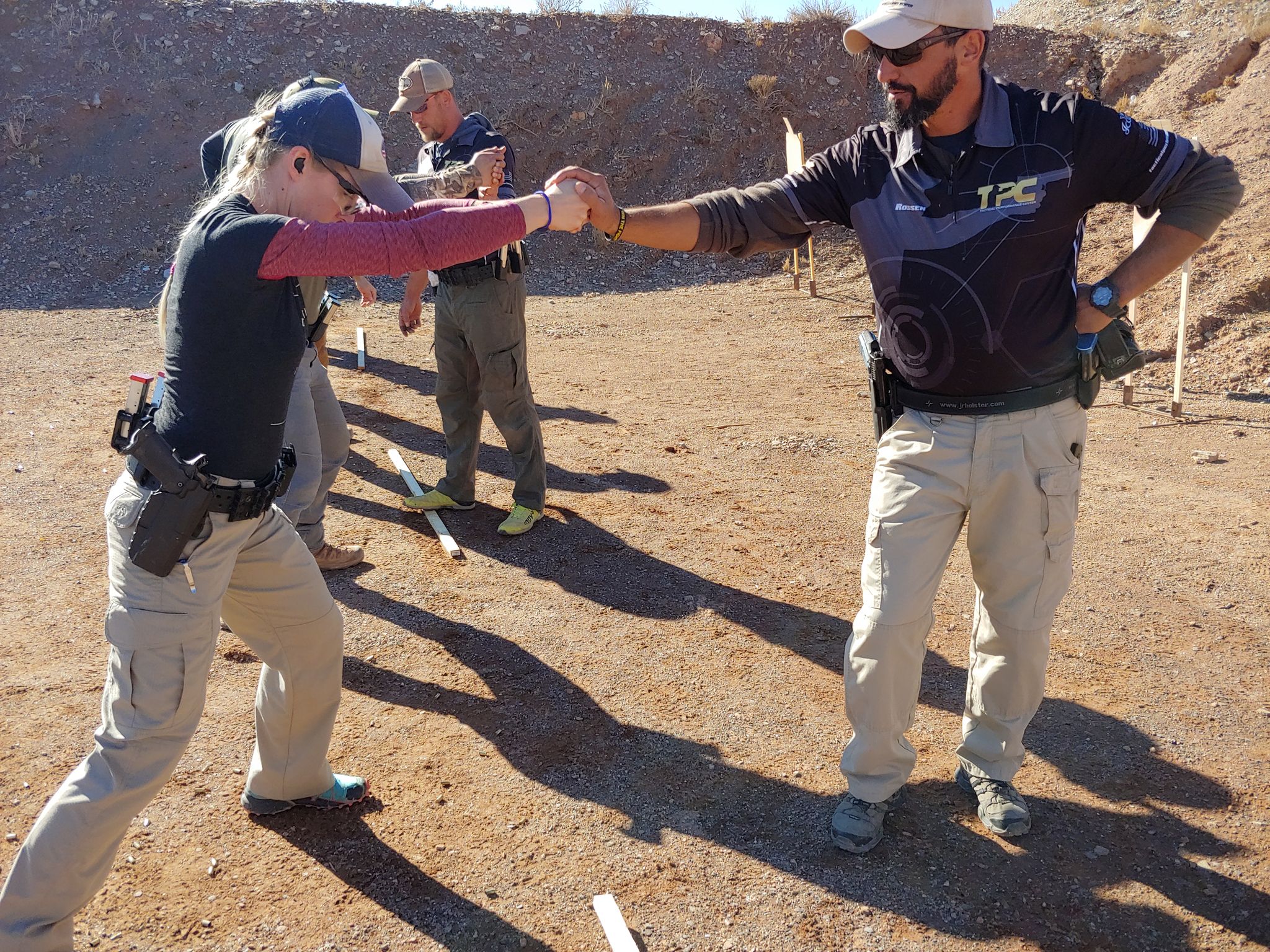First-Time Gun Owner? Follow the Four Rules of Firearms Safety.
First-time gun owners are often met with an overwhelming amount of information to digest. But what do you need to know to be safe and enjoy your firearms?
I’m going to share a few tips on range rules for new gun owners so you can safely start enjoying your range days!
Learn the Four Rules of Firearms Safety
The reason the four Rules of firearms safety are so important is that on their own, they can prevent an accident. And if you use them all together as intended, they are truly mechanisms that can stop accidents before they happen. If you treat every gun as if it was loaded, it means you never point it at anything you don’t want to destroy. It means you keep your finger off the trigger until you are ready to shoot. It means you know what’s beyond your target. The respect required to responsibly handle firearms isn’t something that just happens. You need to habitually follow the rules and teach them to others just as we teach them to respect other powerful tools.
Every Time You Handle a Firearm, Ensure That It Is Empty
The number one rule when handling firearms is every time you pick up a gun, make sure to check if it’s loaded. This means when someone hands you a firearm, when you take it out of the safe, when you pick it up off the shooting bench, when you pick it up to put it away, or when you pick up your buddy’s gun that you have been waiting to shoot — EVERY TIME you handle a firearm, your first step should be to check if it’s empty!
If there is one rule you should respect above all others, it’s confirming the state of the gun. When you work with others on the range, this becomes more important. If you cannot physically see an empty chamber, check before you handle the gun. If you watch competition shooters, you often see us check the status of our guns. You will see us with pistols for example, confirm it’s empty and drop the hammer on an empty chamber. We do these things out of habit and because we have established a “norm” for the status of that gun. For us in competition, the norm is empty unless we are shooting. Establishing a norm like, “All guns are cold when we go downrange” is a valuable safety strategy that you can incorporate on your home range.
Hot and Cold Guns
People will refer to “staying hot” or “going cold” with their firearm. The meaning is pretty obvious, but how you enact this can vary. “Hot” means loaded and ready to shoot. “Cold” means an empty gun. Some ranges require you to go cold whenever you head downrange to put up a target. Some require a chamber flag (usually a plastic safety flag that you insert into an empty chamber). These are helpful for inexperienced shooters to use because their use requires that you visually and physically verify the gun is empty. They are also helpful for a range officer to see your chamber is clear and the gun is empty.
Cold or empty guns means there is no ammunition in the chamber AND you have no magazine inserted. No shells in your shotgun mag tube and no rounds in an open cylinder on a revolver. Literally, NO AMMO in or on the gun. That’s cold.
Some ranges might require that you put your gun in a rack when you walk downrange so they are not pointed at you. This is not a concern on an empty gun, but if you are on the range with strangers and not using chamber flags, it might be prudent to have a “safe area” where guns are placed in a rack while you go downrange. For a family shooting together on their own land or a county range without any facilities, this can be as simple as a tarp on the ground or a table off to the side of your shooting area.
Another facet of going cold is that nobody handles the guns while people are downrange in front of them. This is another reason to have a “safe area.”
Hot, Hot, Hot
Staying hot has its own set of risks and is usually not employed in recreational range time. It is more for classes led by experienced trainers. An example would be breaking from class to talk about a skill or changing a drill to the next evolution. Students might stay holstered and guns hot. However, for your own peace of mind, if you want to empty your pistol and reholster, most instructors will not fault you. The risk with staying hot is that you can forget the status of the firearm and if you change what you are doing, you can forget that it is loaded. And when most people operate on the norm of an empty gun, this creates potential for accidents. So going cold is never a bad plan. For more average range days in a noninstructional setting, going cold should be your norm — the thing that you do every time you finish shooting.
Situations Where You Would ALWAYS Unload Your Gun:
-You walk off the shooting line at an indoor or outdoor range
-You walk downrange to change targets or verify hits
-You are in a class and finish a drill and stop to reload mags off the firing line
-You are at a class and need to use the restroom
-You finish a stage in a match
-You stop shooting to adjust your optic
-You are done hunting for the day and even though you will go right back outside your hunting cabin with that same rifle in the morning, you empty the gun
-You stop a young or new shooter to teach them something
-You stop your training to answer the phone
To sum it up, if you are at all considering walking away from a gun, empty it! If you anticipate handling it while someone shows you how to hold it or manipulate it, empty it!
New Firearm Owner Concerns
This brings me to the new shooter who might have troubles or anxiety loading and unloading a gun. For those of us around firearms a lot, this seems unfounded. But for the brand-new firearm owner who has never handled a firearm, this can honestly be something to stress about. Learning how your firearm works and the mechanics of loading and unloading can usually be accomplished with dummy rounds or with simply an empty magazine. This will lead to confidence and safer experiences for all involved on the range.
The Long and Short of It
In addition to basic rules, two terms new firearms owners should understand are references to gun size. We call rifles and shotguns “long guns” and pistols are just handguns. Handling a long gun as your first shooting experience, particularly something manageable like a .22 rifle, will give a shooter a safe and friendly introduction to handling a gun. Long guns are also much more difficult to point in the wrong direction. Holding a rifle while trying to turn backward and talk to your instructor is not as easy as turning with a handgun. An inexperienced person might not be aware of their muzzle direction! Handguns tend to require more supervision and vigilance because turning with them in-hand might happen accidentally. New shooters might not have the skill to rack the slide and manipulate the firearm without accidentally turning the gun sideways. It’s a very common occurrence in new handgun shooters and thus requires special attention. Teaching a new shooter to manipulate a handgun while it is empty and explaining these concerns ahead of time will help everyone have a safer experience.
New Gun Owners, New Friends, New Experiences
A good dose of immersion in everything going on at the range helps a new shooter understand not just safety but the enjoyment and satisfaction of working with a firearm. You don’t even have to bring a gun to really get an idea of what happens on the range. If you have never been shooting or never been to a shooting range, try to find a mentor or friend to tag along with you for your first time. If you cannot find a mentor, call your local range or gun shop and ask if you can come to observe, explaining that you are a new firearm owner and are looking for a place to shoot and would like to check out their range. You’re going to find a helpful community in firearm owners who want to see you safely enjoying the range like they do!
For more ideas of ways to get the most from your firearms and time shooting them, make sure you visit Winchester.com and follow them on social media!
RELATED CONTENT:






